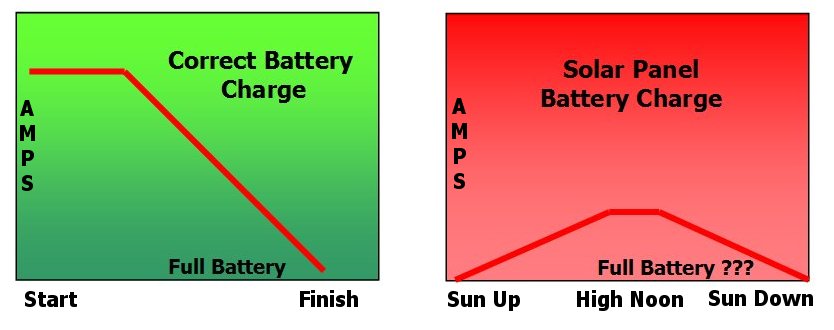Greetings!
I’d skip the solar too. Been there and done that, and will never make that mistake again. Tried it 3 different times, and spent well over $10k between them. They are far more hype than reality. Even when they’re good, if you want a reliable system, you still need to charge your batteries while driving, and you need a generator. Parking in the sun during the summer is never a good idea. Shade is what you want. You would be much better off shading your roof with plywood than with solar panels. Then if you want to play with solar later, add at least an inch of insulation between the plywood and the solar panels. The solar panels act like a blast furnace on the bottom when they’re in the sun. At 4 inches from your roof, they’ll blister your paint.
When you’re boondocking, if no shade is available, you need a way to create shade for your whole vehicle. Even though I can cool my rig, even in direct sunlight, shade will save you a ton of power and improve your life. Learning how to conserve power will get you a lot farther than solar panels. Solar panels are a money pit that never keeps it’s hands out of your pockets. They simply don’t charge batteries correctly, and thus they kill them prematurely. The only people promoting solar for RV’s are the people making money from it, and the newbies that haven’t had it long enough to discover it’s pitfalls.
Deep cycle batteries are usually good for 150-300 cycles, some as much as 500 cycles, but they’re rare. If you’re cycling your batteries every day like you do with solar panels, 150-300 days will be the batteries lifespan. A “cycle” is discharging it more than 10%. Under 10% is not considered a cycle. Now if you only cycle your batteries once a week, their lifespan increases 7 times, provided that their charging algorythm is correct. Here’s a chart demonstrating correct battery charging vs. solar panel battery charging.
As you can see the algorythm is all wrong. Batteries want a high bulk rate charge to begin with, that then tapers off as the battery gets charged. Solar delivers a tiny trickle charge, then ramps up, then back down. 99% of the time never reaching the recommended bulk charging rate.
Your alternator or a generator with a typical shore power battery charger will deliver a much better charge for your batteries health and longevity.
I quit buying new batteries, especially the expensive ones that the solar promoters promote. Now I buy my batteries from wrecking yards for under $20 each. They do have deep cycle batteries, and they have dates on them to determine how old they are. I typically get 5-7 years out of the junkyard batteries. All the promoters give you a bunch of mumbo jumbo to keep everybody confused, ignore all of them.
Now on all my batteries, even my starter battery, I have over discharge battery protectors. They will prevent your batteries from getting too discharged, and prolong their lives. On the starter battery, it will cut it off before it drops to low to start it. On mine, I tap the brake pedal to reset it, so I can start my rig. The one on my house battery resets itself once the battery starts getting charged. Those battery protectors are worth their weight in gold, but I think they were under $20 each. ( From a used battery shop, I bought a recycled house battery, and isolator, and two battery protectors. They installed everything, parts included for $80. )
The bottom line is, even if I had to replace a $20 battery every year, other than the hassle, it would be acceptable. A $100+ battery I wouldn’t be very happy. At 5+ years, it’s totally acceptable to me.
Learn to be frugal on your power consumption. I charge my laptop, my phone, and run a few LED lights, a couple of low amp fans, and my swamp cooler off my house battery, and that’s about it normally. I make a point of charging whatever possible when I’m driving, which helps conserve house battery usage. While I am no longer a fan of rooftop solar, I do enjoy a few individual items that have their own solar panels. Among them are lanterns, a radio, a bug zapper, and a household battery charger to charge AA/AAA/C/D/9-volt batteries. I don’t normally use an inverter for anything, if I want shore power, I have my generator.
I’m generally a city camper, and I usually drive some at least 2-3 times a week, (Not a lot or far), but that usually keeps my house battery charged just fine. If I’m boondocking, I’ll charge my house battery about once a week with my generator and battery charger. It can take from 20 minutes up to maybe an hour to charge my house battery once a week. My $99 generator will run about 7-8 hours on a gallon of gas. Even when I was using just the generator to charge my house battery, 5 gallons of gas would last the better part of year. Using old school math, that’s way cheaper, more reliable, and more efficient than solar.
Cooling is only a problem if you’re listening to the promoters who aren’t making a profit from a DIY project. Indirect swamp coolers work great, and they’re cheap to build and very power efficient. If I’m running mine pretty much constantly, it cuts my battery recharge cycle down to about 6 days instead of 7+ days. That’s energy efficient enough for me.
Cheers!
